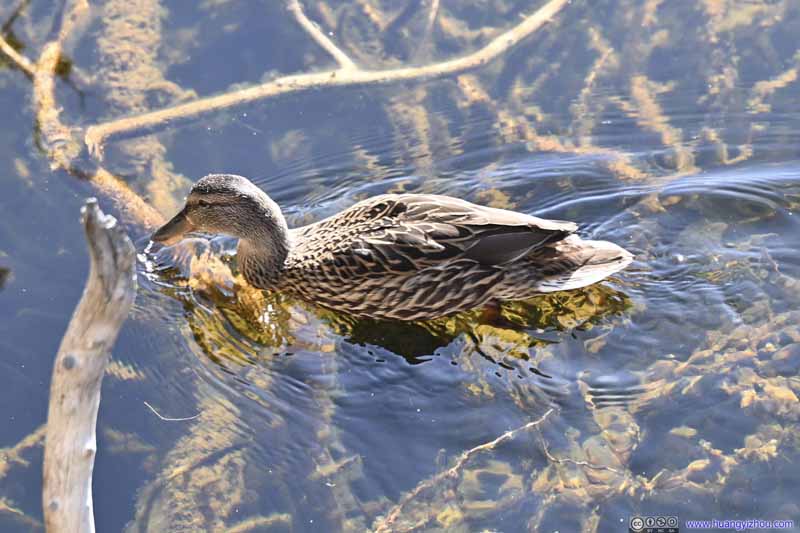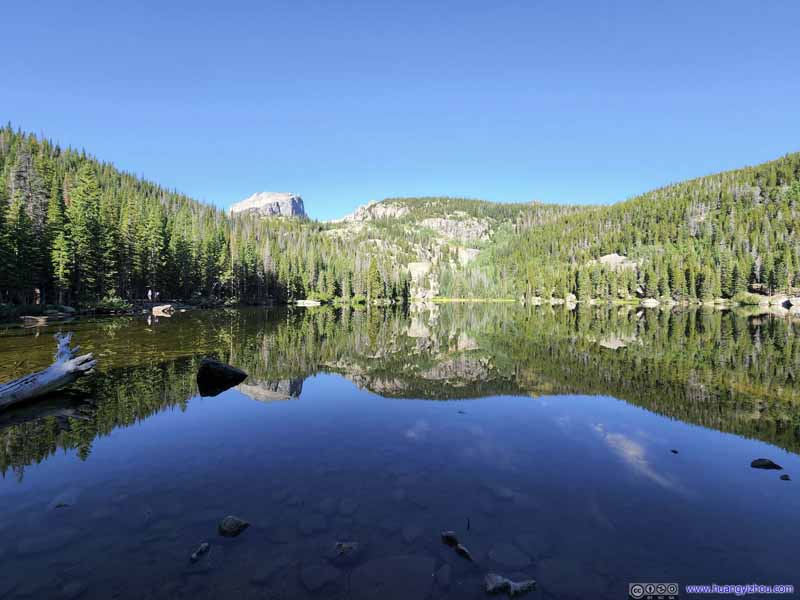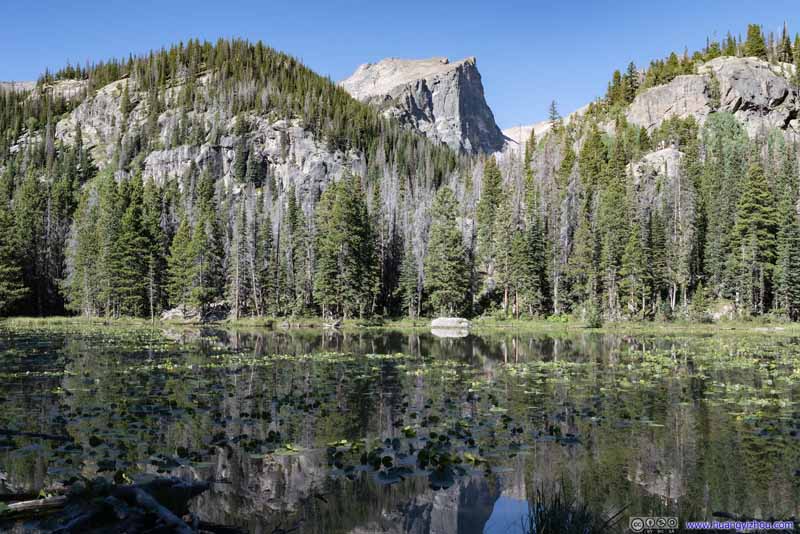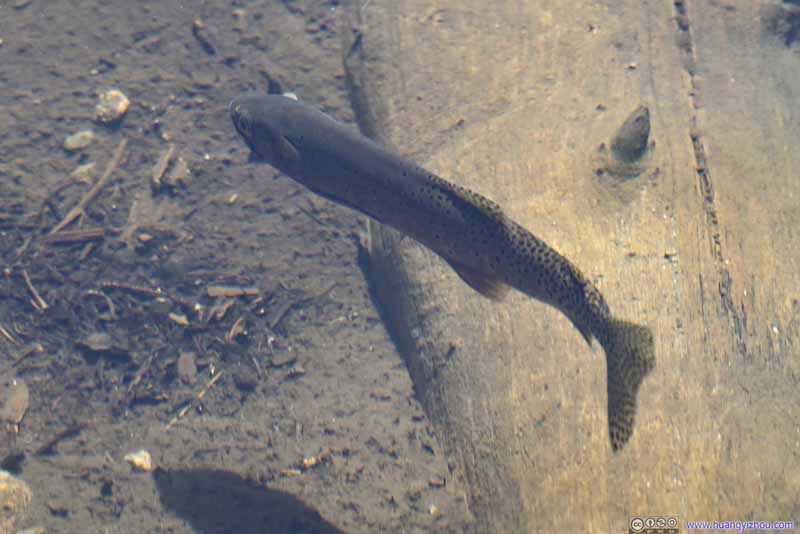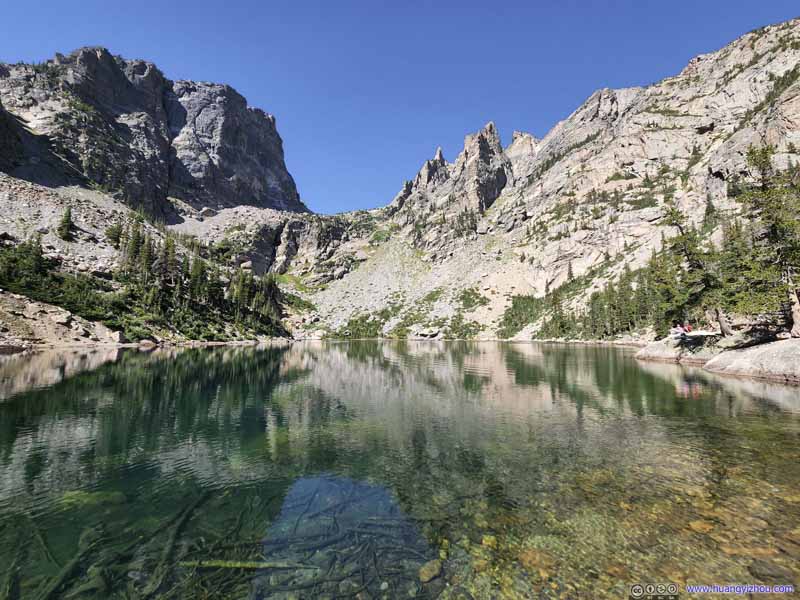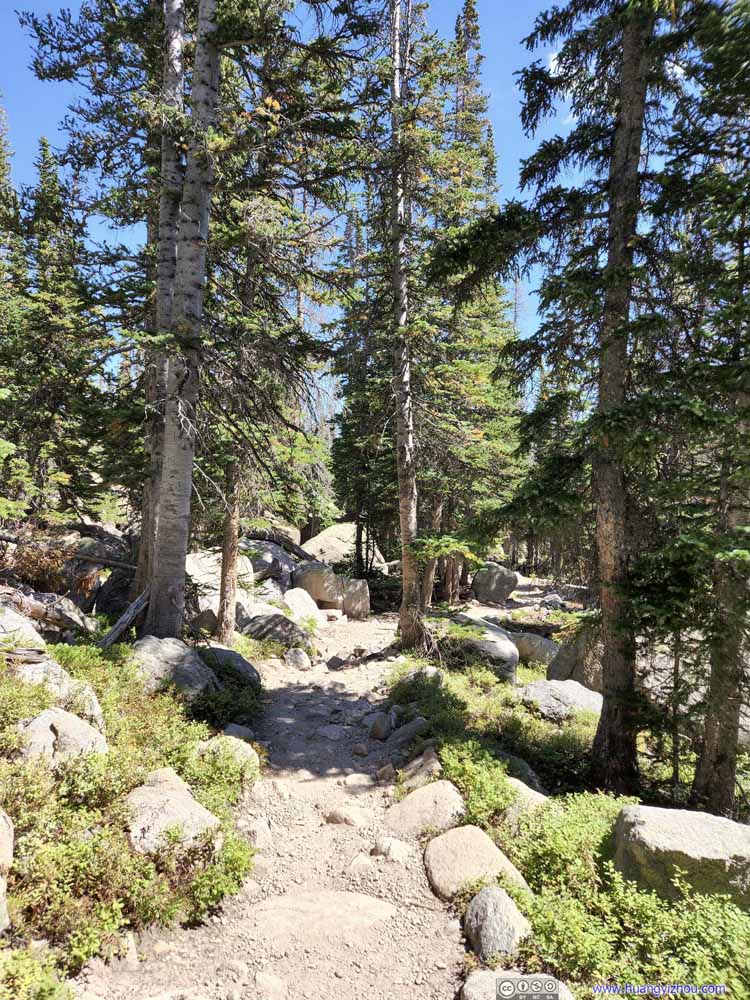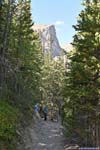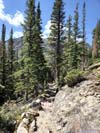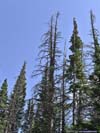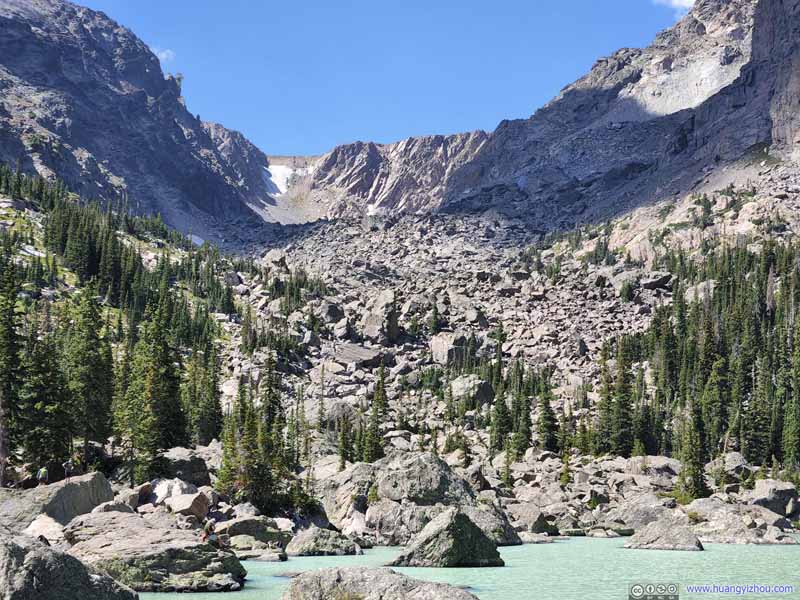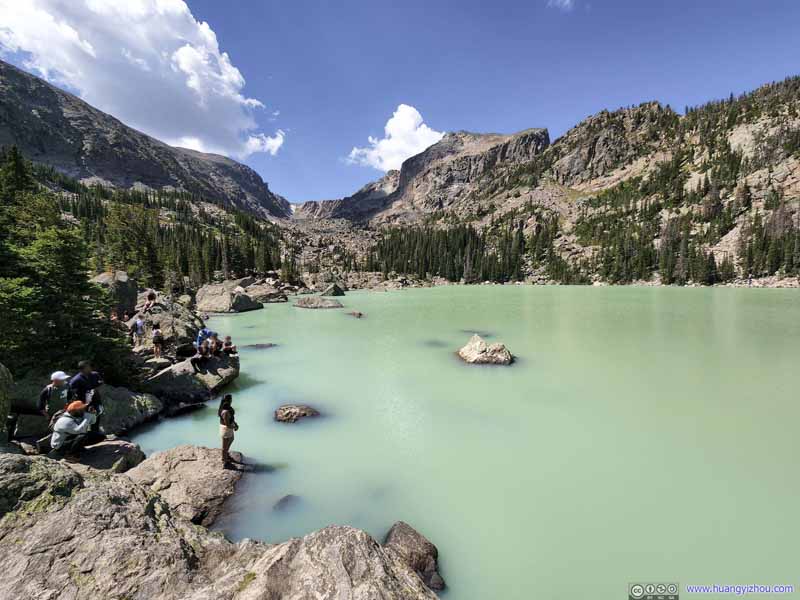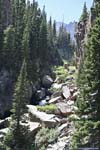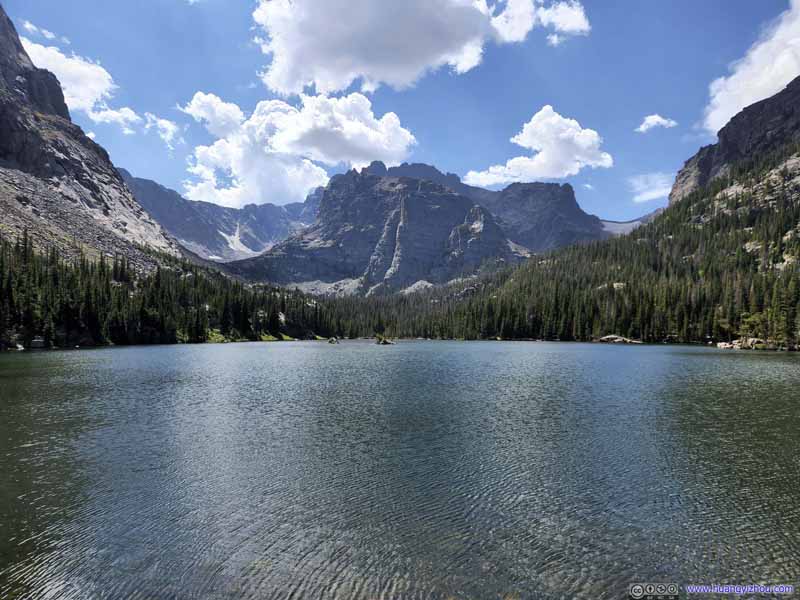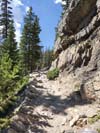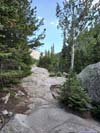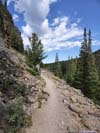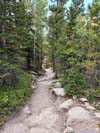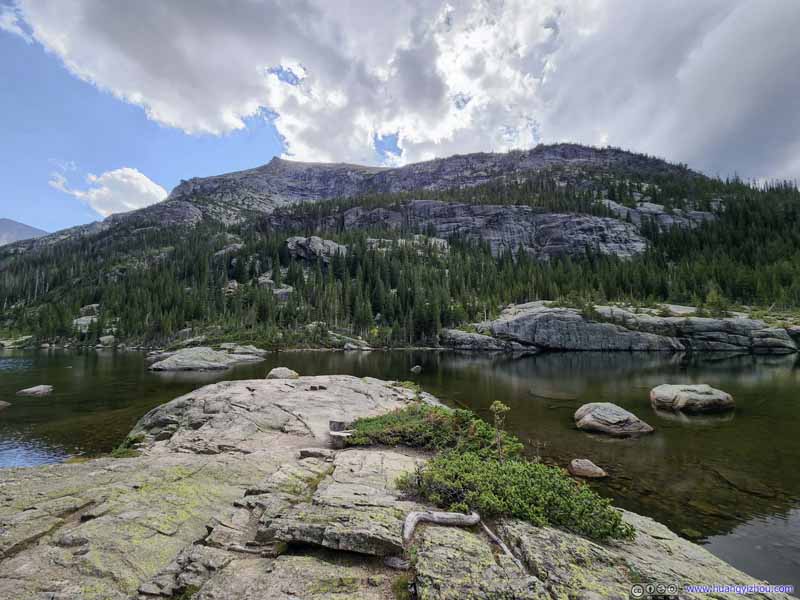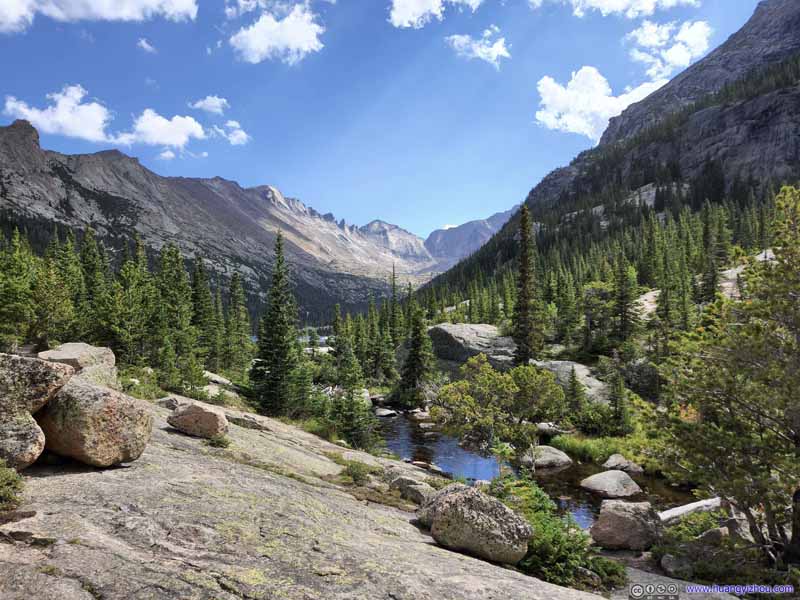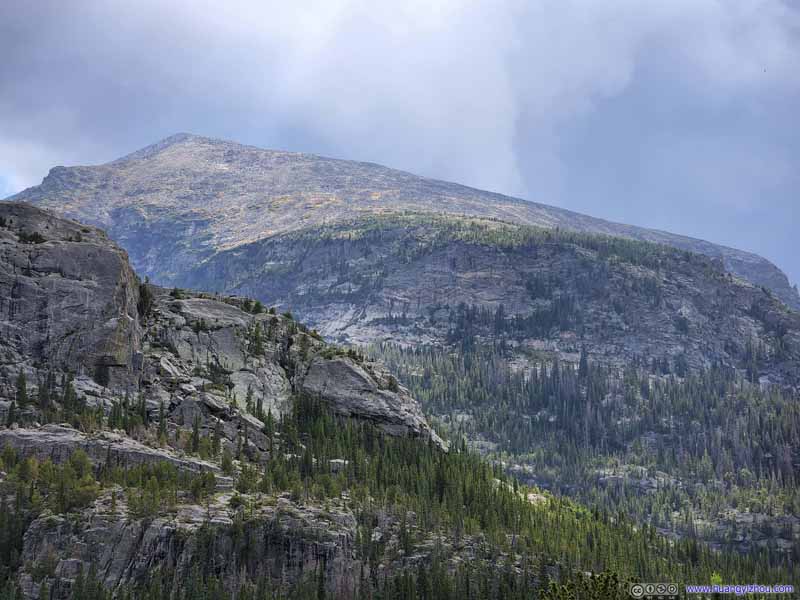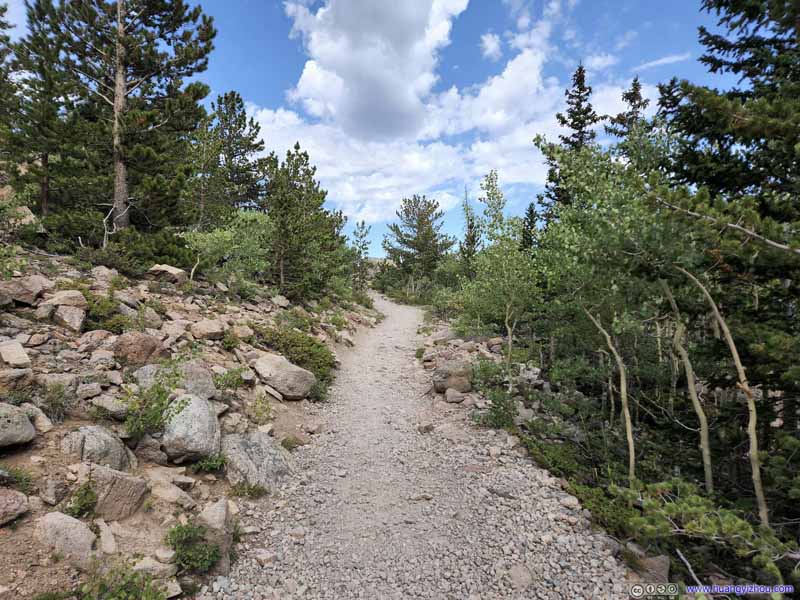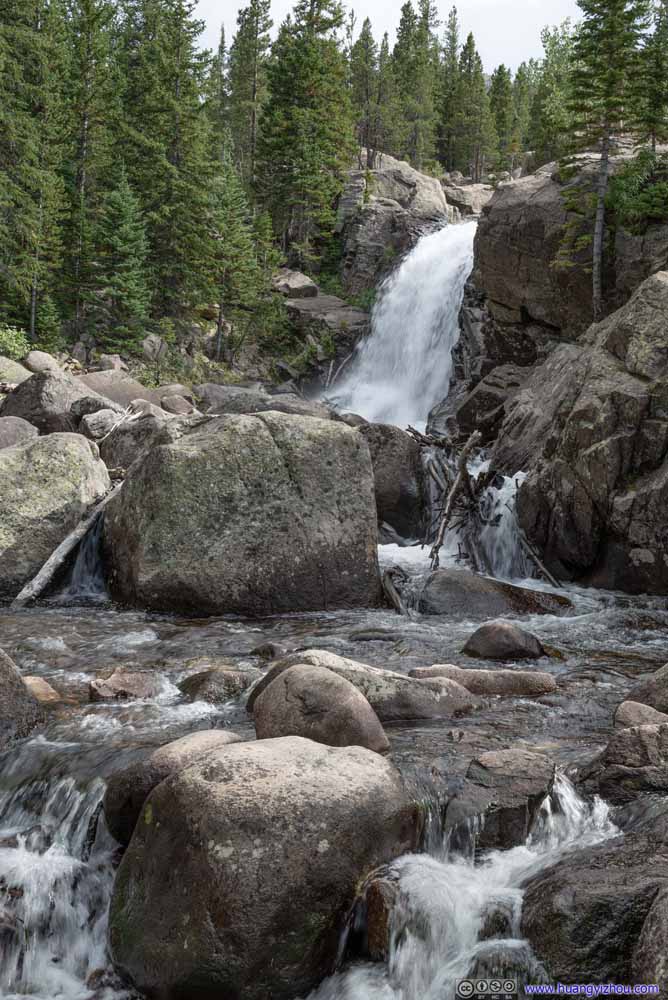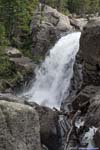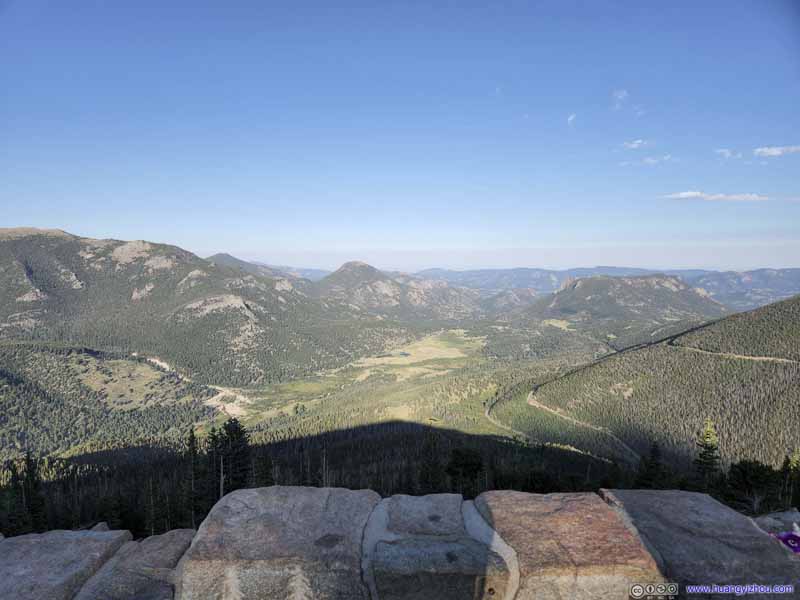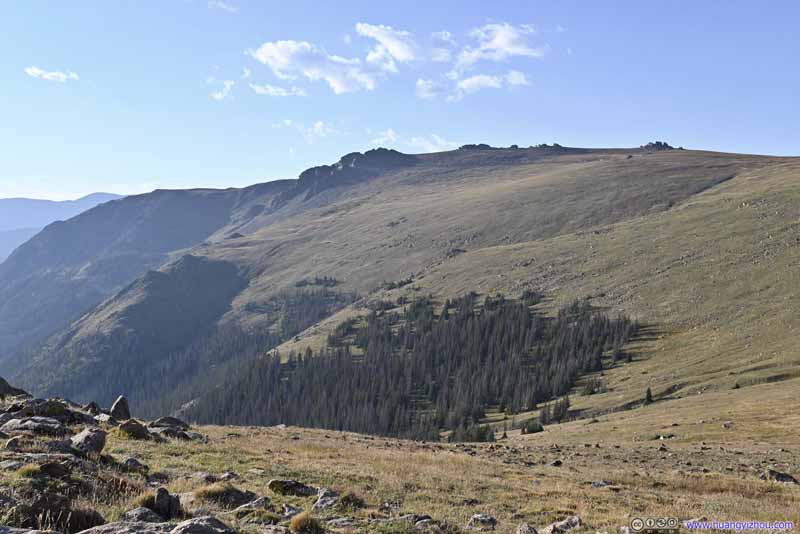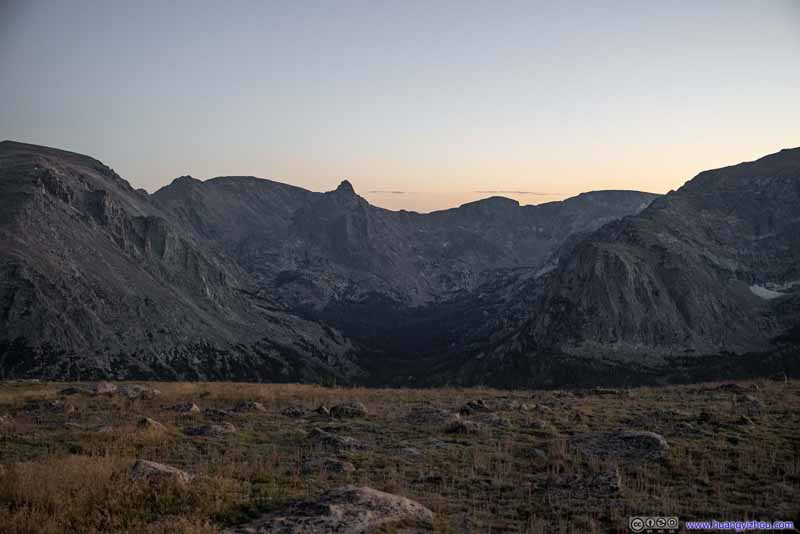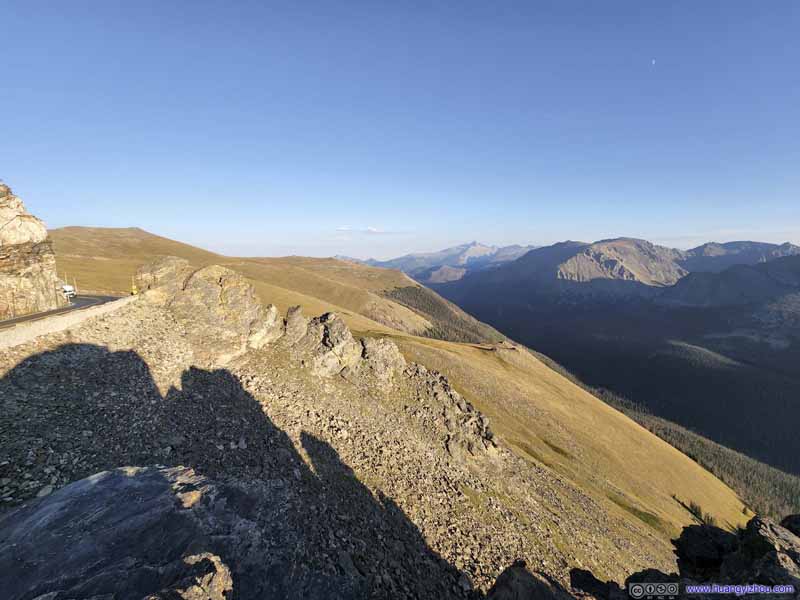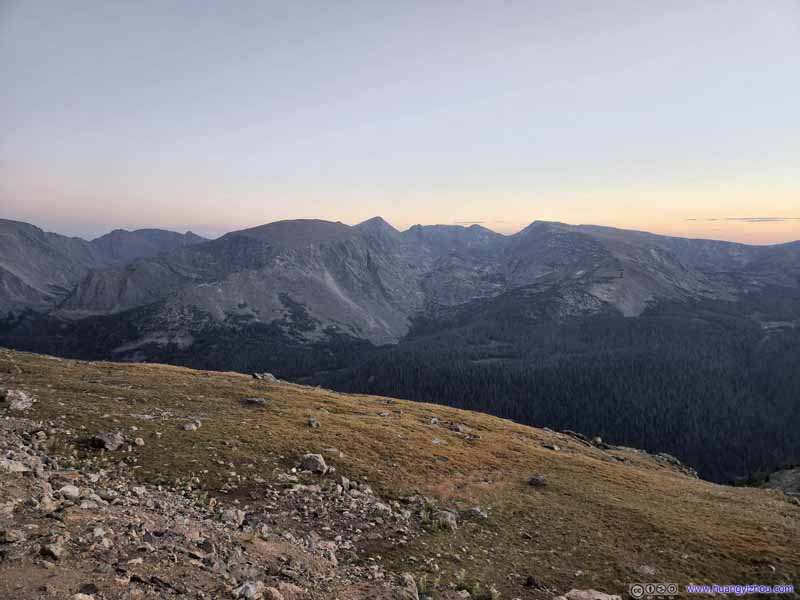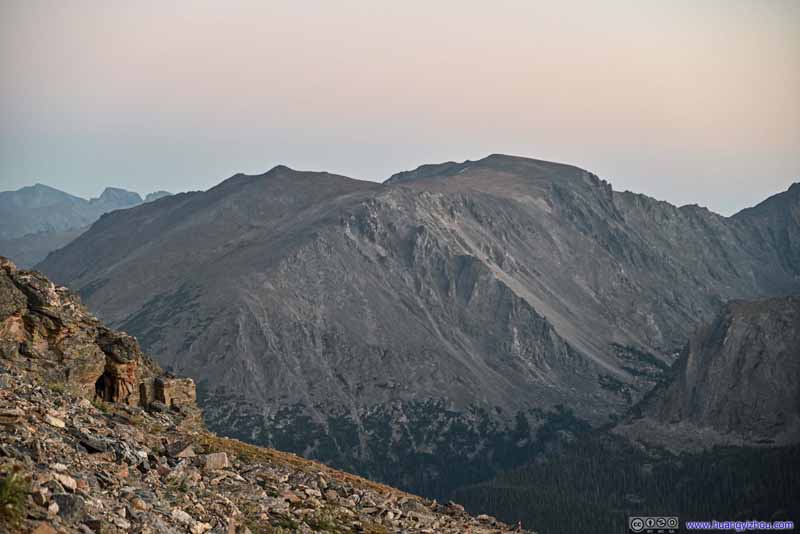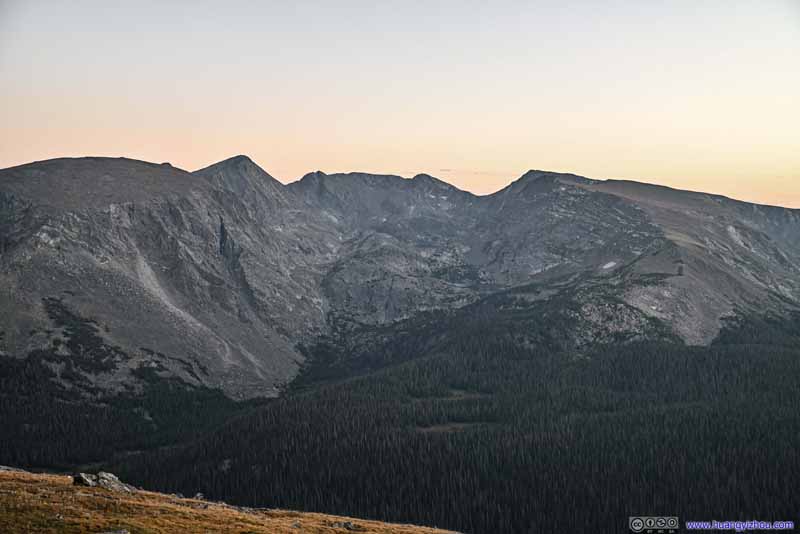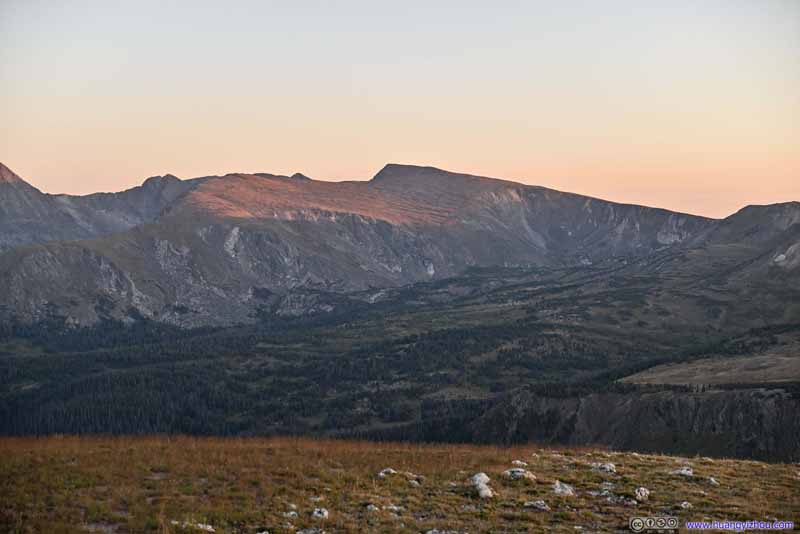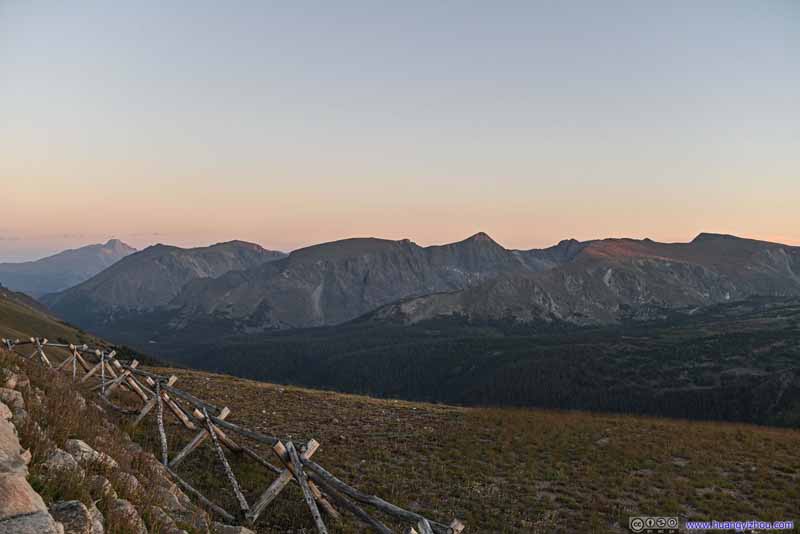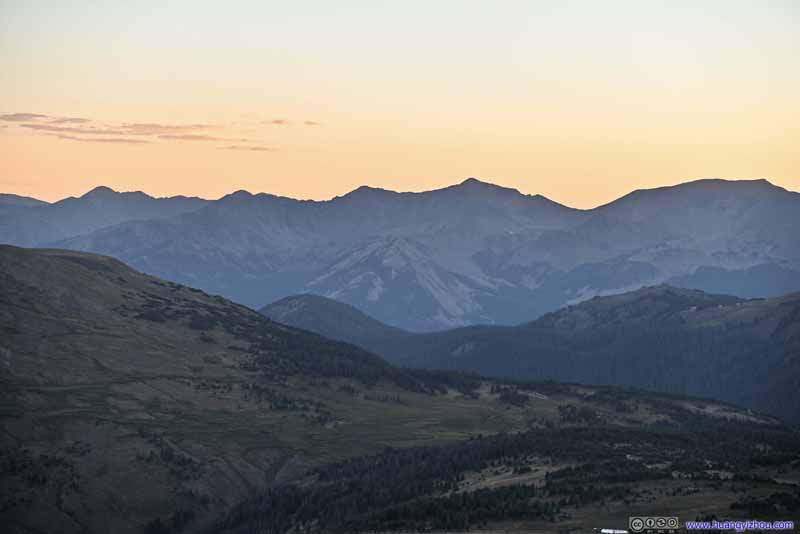Updated on December 27, 2022
Day 7 of 2022 Colorado Trip, Rocky Mountain National Park
Seventh day of our 2022 Colorado trip. We would be visiting Rocky Mountain National Park today, do some hiking among the scenic alpine lakes in the Bear Lake area, and finish the day with a tour of the park’s Trail Ridge Road.
For this Colorado trip, we reserved two days for Rocky Mountain National Park. After a thrilling hike to the summit of Longs Peak the previous day, we planned to spend this day in a way like a typical tourist in the park.
That meant we would focus in the Bear Lake region, the heart of the park. Mountains of the Continental Divide formed a few comb-like gorges in the region, which were home to a few glaciers and many beautiful alpine lakes. The latter was always my favorite where nature showcased its bounty with pristine waters, lush trees and rugged boulders.
At Bear Lake region, we planned a trimmed down version of Lake Loop Trail (AllTrail link), skipping Sky Pond and Lake of Glass. After a grueling hike the previous day, this should be the perfect match for our fitness.
During the summer months, Rocky Mountain National Park had a time-entry system in place, and the morning slots (5-7 and 6-8) for the Bear Lake region were the most sought-after. My experience was that, for their initial release a month in advance, these slots were gone within minutes. Knowing that we stayed about an hour from the park’s entrance and we weren’t good at getting up early, we reserved the 6-8 slots, and entered the park around the likes of 7:50am.
By which time the parking spaces at Bear Lake were long gone. Despite a few signs stating this inevitable fact, we were feeling speculative and still drove up there. In the end, we retreated to the Park & Ride at Glacier Basin and took the shuttle bus to Bear Lake.
Lake Loop Trail
After getting off the shuttle at Bear Lake, we took a few moments for some snacks and sunscreen, before setting off the hike just before 9am. Here’s GPS tracking:
Bear Lake
First, we took the short 1km loop trail of Bear Lake, right next to the shuttle stop. And just a few steps into the hike, we found a deer grazing in the bushes. Probably due to the amount of visitors to Bear Lake, that deer wasn’t remotely afraid of human.
In addition, I also spotted a few ducks swimming in Bear Lake, which was the only duck sighting of the day.
Click here to display photos of animals near Bear Lake.
Back to Bear Lake itself, it had the typical tranquility of alpine lakes, maybe even more so that its shores were lined with pine trees, not boulders.
Click here to display photos of Bear Lake.

Hallett Peak behind Bear LakeNow I wasn’t a big fan of the wrinkles on the water, created by some ducks.
Nymph Lake
After that, we continued towards Nymph Lake, which wouldn’t be remarkable if not for its location along the way to Dream Lake. Some lotuses grew in it, which was unique among the day’s many alpine lakes.
Click here to display photos of the slideshow
Dream Lake
Not long after Nymph Lake was Dream Lake, the poster child of Rocky Mountain National Park. Here the magnificent Hallett Peak showed off its imposing cliffs, as reflected by this elongated body of water. It’s like a less striking version of Long’s Diamond Peak, but viewed at the perfect angle, and decorated by lively trees rather than harsh tundra. A view that one just couldn’t get bored of.
After spending 15 minutes enjoying a picturistic picnic, we continued into Tyndall Gorge towards Emerald Lake.
That’s when my friend spotted a few fish in the crystal clear waters of Dream Lake.
Click here to display photos of the animals.
Emerald Lake
At around 10:40am, we reached Emerald Lake, the end of the trail.
The lake was located just at the foot of Hallett Peak, whose rocky cliff felt a lot closer compared with Dream Lake. Unfortunately, the proximity meant one was no longer appreciating its cliffs from the side, and thus the views weren’t as spectacular. I guessed this lived up to their names, “dream” could be romantic, but the reality up close may not. I could appreciate that Emerald Lake looked a lot “greener” than the previous lakes and thus its name. Earlier in the season there may be snow along the rocky slopes, giving it a more “alpine” feeling. There weren’t many accessible areas along Emerald Lake, unlike Dream Lake where people could spread out along its long shoreline, so it felt sort of crowded.
In conclusion, I didn’t enjoy Emerald Lake compared with other lakes of the day.
Click here to display photos of the slideshow
After about 20 minutes at Emerald Lake, we traced our steps back to Dream Lake, and continued our loop hike towards Lake Haiyaha.
Click here to display photos of the trail.
Leaving Dream Lake, the trail took on some quick elevation gain through a switchback, before reaching some unofficial overlook towards the east, where we got a clear view of Longs Peak and the extensive fields next to it.
Click here to display photos of the slideshow
Lake Haiyaha
Not long after the previous overlook, we were approaching Lake Haiyaha, an indigenous word of “rocks”. On June 28, a rockslide on the south side of Hallett Peak exposed glacier sediments up in the canyon. Rainfall carried the sediments down to Lake Haiyaha, giving it a unique muddy shade of cyan. This rare sight made it a popular destination for summer visitors.
On our way there, we got a sneak preview of the lake’s colors from Chaos Creek, one that flew from it.
Click here to display photos of the slideshow
Living up to its indigenous name, the shores of Lake Haiyaha consisted of rocks and boulders of various sizes, and it’s somewhat of a scramble to reach it. During our visit, the lake felt a bit crowded with throngs of spectators watching its unique colors.
Click here to display photos of Lake Haiyaha.

Hallett Peak

People at Lake HaiyahaMuddy water makes it harder for fish to spot baits. This gentleman picked a good spot for fishing.
After that, we continued on Haiyaha Cutoff Trail towards Glacier Gorge. It ended up being a comfortable but unremarkable 35-minute stroll in the woods, without views. In the end, we reached a major intersection at 1pm, where two spurs led to The Loch and Mills Lake, in addition to the trail leading back to Glacier Gorge Trailhead (and maybe a few other winter trails that existed only on maps)
The two spurs leading to The Loch and Mills Lake were of similar lengths. We decided to visit The Loch first, and Mills Lake later.
The trail to The Loch followed a small creek that flew from the lake, as it carved its way through a canyon. At a few switchbacks, it offered views of waterfalls along the creek, a welcoming reprieve from the 10%+ average gradient for this section.
The Loch
Half an hour from the intersection, we reached the Loch, which is a Scottish word for “lake”.
Here we deviated from the established trail, and went to the end of a small peninsula to the left, right in front of “The Sharkstooth” beyond the lake. The rugged rock faces of “The Sharkstooth” felt like a demon guarding some treasures, and us, as challengers, reached its doorstep after some exciting journey. With that, the lake in between, with its breadth, felt like the place for the most epic battle that imagination can conceive. I felt this was a sight that could rival Hallett Peak from Dream Lake. Here the scenery not just exhibits its splendor, it confronts its visitors.
Click here to display photos from The Loch.
We spent about 25 minutes at The Loch, accompanied by only a few other groups, before heading back to the intersection. An additional 20 minutes later, we were on the other spur trail to Mills Lake.
Click here to display photos of the trail.
Mills Lake
This was like a more easygoing version of The Loch, located in a wider gorge. The mountains surrounding it were more laid back, like they were looking after the lake, not facing it off. We found good solitude at a rocky peninsula extending into the Lake, as this was the only lake of the day that we had to ourselves. It’s a good place to appreciate the magnificence of Longs Peak, which we just summitted the previous day.
Click here to display photos from Mills Lake.
Click here to display photos around Mills Lake.

Half Mountain
We spent about 15 minutes at Mills Lake, before heading back to the intersection. In the end, the two spurs to The Loch and Mills Lake took us just over 2 hours, after which we continued onto the loop trail.
Click here to display photos of the slideshow
Alberta Falls
After the intersection, the trail largely followed Glacier Creek back to the bus stop, which was formed by waters from The Loch and Mills Lake. Along the way, the creek made a few waterfalls, of which Alberta Falls were the most significant.
The waterfall can be viewed from a safe distance right next to the trail (first few photos of the following slideshow), or one could hike a few steps up the hill and get up close with it (last few photos). Personally, I liked the former as it’s an unmistakably waterfall view. The latter felt more like watching some torrents, as it’s harder to appreciate the height difference.
The waterfall is only 1.3km from a trailhead, so it’s rather popular and can get crowded at times.
Click here to display photos of Alberta Falls.

Pool next to Alberta Falls
After Alberta Falls, it’s a comfortable stroll back to the trailhead. Before crossing Chaos Creek (which, at this point, no longer looked as chaotic as the muddy waters of Lake Haiyaha, after mixing with water from Dream Lake), we decided to head down the hill towards Glacier Gorge Trailhead instead of going back to Bear Lake. In this way, we left an open jaw in our loop, and saved ourselves some elevation gain.
In the end, we arrived at Glacier Gorge Trailhead at 4:20pm, finishing this 17-km hike in just under 7.5 hours. By that time, there was a long line for shuttle bus, a testimony for the area’s popularity.
We waited 15 minutes for the shuttle bus, and after getting back to the car, we paid a brief visit to Sprague Lake, which, compared with the many alpine lakes earlier in the day, wasn’t very remarkable.
By the time we left Sprague Lake, it’s 5pm, just over 2 hours from sunset. Since my friend had to head straight to the airport the next day, we felt we still had enough daylight left for a tour of Trail Ridge Road.
Trail Ridge Road
This is the main road in Rocky Mountain National Park, connecting Estes Park in the northeast and Grand Lake in the southwest, passing through scenic alpine terrains.
Before Many Parks Curve Overlook, it’s like a typical drive in the forest, not very remarkable. After that, views of the various mountains across Forest Canyon started to get interesting.

Bear Sighting
Rainbow Curve Overlook
The first overlook that we stopped (since we couldn’t find parking at the previous Many Parks Curve).
Click here to display photos from Rainbow Curve Overlook.
At this time, we realized that afternoon wasn’t the best time to visit the eastern part of Trail Ridge Road, as the mountains across Forest Canyon were in the shade, their magnificence hard to appreciate. Things would look a lot better in the morning.
Forest Canyon Overlook
A major overlook on the south side of Trail Ridge Road. The western face of Longs Peak looked pretty prominent from here, but most other mountains across Forest Canyon were in the shade, not clearly seen.
Click here to display photos from Forest Canyon Overlook.
After sunset and on our way back, we made another stop at Forest Canyon Overlook. The mountains certainly appeared more approachable under twilight colors.
Click here to display photos from Forest Canyon Overlook.
Tundra Community Trailhead
This was another major turnout along Trail Ridge Road, with a 1.8km out-and-back trail onto the alpine tundra. I guessed this trail was set up so that visitors could get a feeling of the tundra landscape, as other tundra areas along Trail Ridge Road were closed to protect their fragile environment.
To us, the tundra trail was hardly exciting. Instead, we found a few boulders on the southern side of the road, and took a few moments to explore them.
Click here to display photos of the slideshow

Boulders
Likewise, we paid this turnout another visit after sunset, with softer colors on the mountains.
Click here to display photos of the slideshow
After that, we headed further west along Trail Ridge Road. Originally, we planned to head all the way to Milner Pass / Continental Divide and then back. We were running late so we decided to only make it to the Alpine Visitor Center.
Alpine Ridge
Alpine Visitor Center featured a cafe and some exhibits, but we only reached there at 6:50pm, long past their closing time.
Next to the parking lot, there’s a 1km out-and-back trail leading up the ridge to a vista. The trail was paved with stairs, so we decided to check it out.
Click here to display photos from Alpine Ridge.

Valley
While I certainly liked the views here compared with earlier at Tundra Community Trail (the warmer colors from lower angles of the sun certainly helped), the views were still not as exciting as the various mountains across Forest Canyon. In addition, the wind was very strong at Alpine Ridge, and it’s getting cold at dusk. So we didn’t stay here for long before retreating to our car.
After that, it’s almost time for sunset. We met some people at the top of Aline Ridge waiting for sunset, but with strong winds we preferred to wait in the comfort of a car. With that in mind, we drove back to Gore Range Overlook, and waited for the sunset.
Gore Range Overlook
One of the few overlooks along Trail Ridge Road facing west, a perfect place for us to watch sunset. The Gore Range Mountains were actually located to the west of Silverthorne and Frisco, about 60 miles away.
Click here to display photos of the from Gore Range Overlook.
After that and on our way back, we stopped again at Tundra Community Trailhead and Forest Canyon Overlook. This time, the mountains emerged from the shadows into twilight, and we could finally appreciate their elegance. After that, we drove back to our hotel in Longmont, concluding this long day.
END
![]() Day 7 of 2022 Colorado Trip, Rocky Mountain National Park by Huang's Site is licensed under a Creative Commons Attribution-NonCommercial-ShareAlike 4.0 International License.
Day 7 of 2022 Colorado Trip, Rocky Mountain National Park by Huang's Site is licensed under a Creative Commons Attribution-NonCommercial-ShareAlike 4.0 International License.






